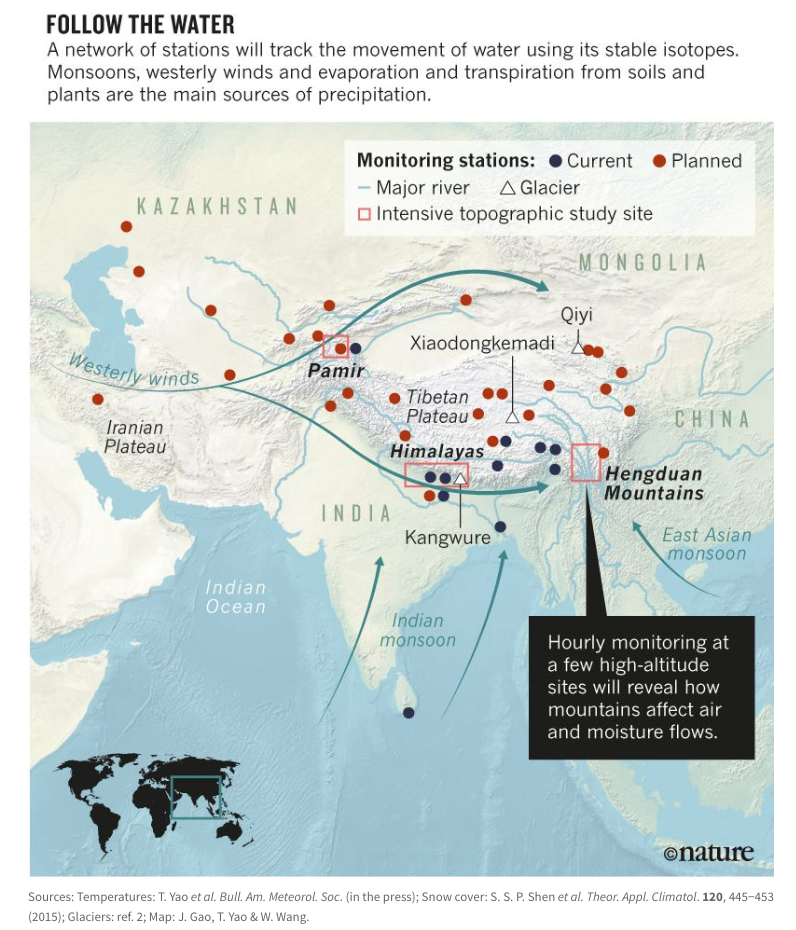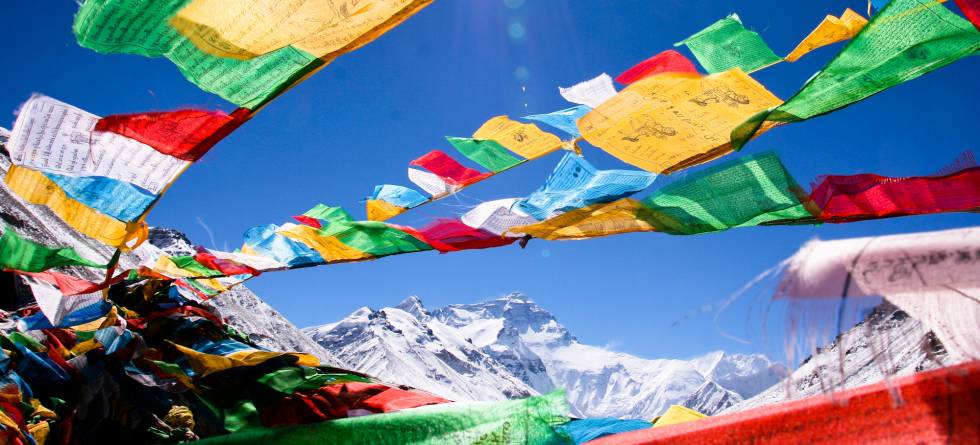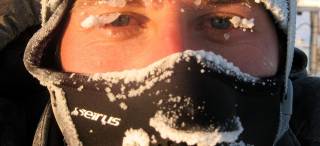In this region, referred to as The Third Pole, few climate monitoring stations are located higher than 5,000 meters above sea level. Together with colleagues from China and France, Hans Christian Steen-Larsen from the Bjerknes Centre and the Geophysical Institute, University of Bergen, emphasize the need for more measurements and combined monitoring. In a comment published in Nature today, they give an overview of the situation.
Changes in the water cycle require more monitoring
For the past 50 years, glaciers in the Himalayas and on the Tibetan Plateau have been shrinking, releasing more meltwater than before. Lakes are expanding, and the seasonality of the river flow changes. Changes in weather patterns have also been documented.
Hans Christian Steen-Larsen and his colleagues call for an expanded network of monitoring stations across the region. In addition to ordinary weather variables like wind, temperature and precipitation, measurements of the molecular composition of the water are needed.

Expanding the network and collaboration
Since 2014, 11 new stations have been set up and plans have been made for 20 more stations to be set up this year. This push for new knowledge is part of China’s Pan-Third-Pole-Environment, which has a budget of US$ 215 Million over the next 5 years. Another national program focusing on field observation campaign entitled as Second Tibetan Plateau Expedition and Research (STEP) is launching next year.
Workshops are planned to prepare for model-observation integration and facilitate scientific outcomes serving the society. Hans Christian Steen-Larsen will therefore be busy in the coming years with frequent visits to Beijing and Tibet, and will already in three weeks join such a workshop in Beijing.
- The strengthening of the Norwegian-Chinese collaboration is exciting and holds many future opportunities for researchers and students, Steen-Larsen says.


